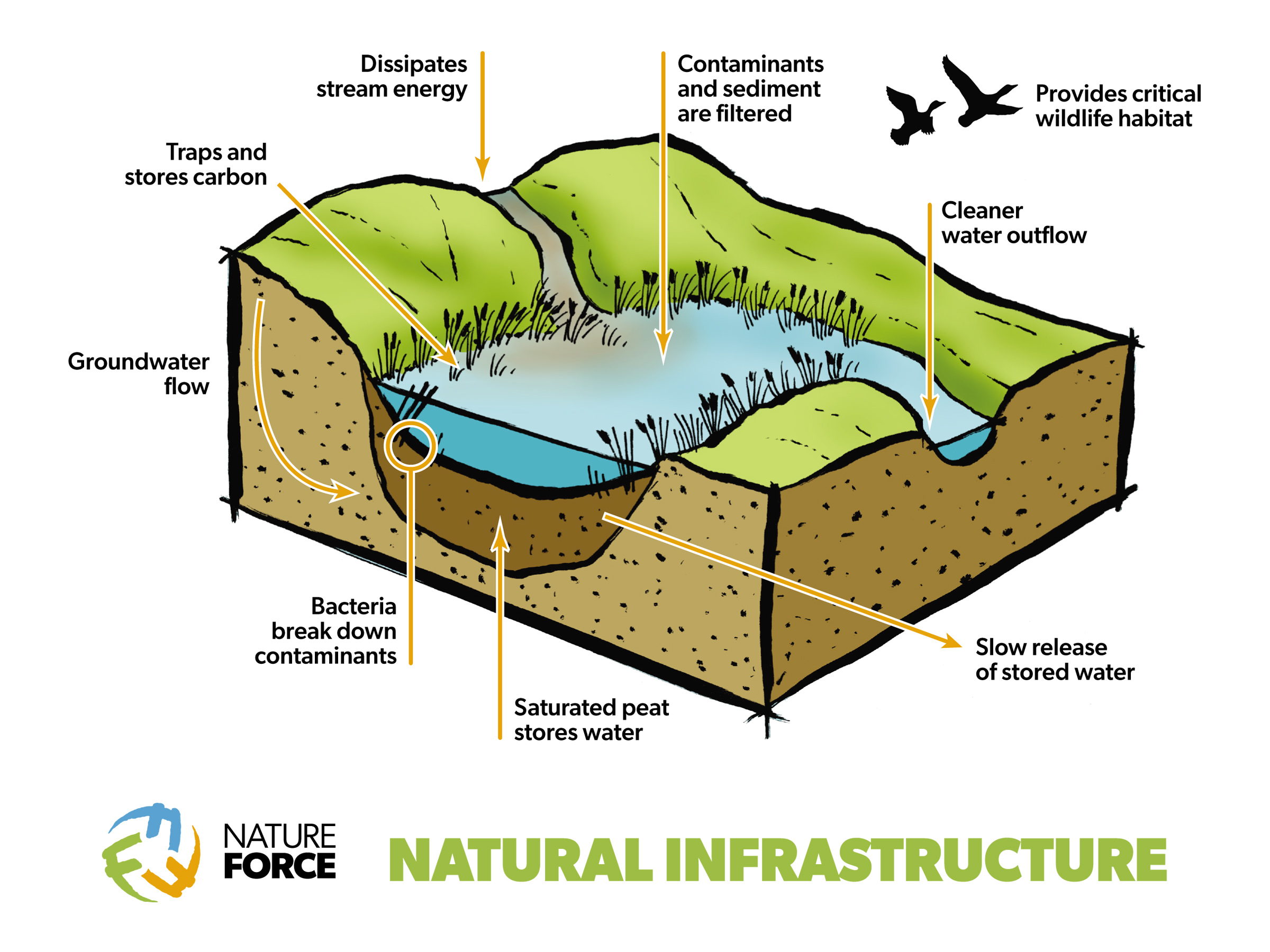

Dr. Rhonda L. McDougal—National Director of Business Development & Nature Force Strategic Lead, Ducks Unlimited Canada
Communities, policy holders and insurance providers alike—we’re all paying the price associated with increased flooding and extreme weather due to climate change. In its Climate Risks: Implications for the Insurance Industry in Canada report, the Insurance Institute of Canada forecasts that insurance claim costs in Canada are on track to more than double over the course of a decade.
The costs and damages of these risks are overwhelming communities near coasts, rivers and large lakes. Across the country, overland flooding and urban floods are happening at a rate and extent that’s pushing disaster resilience to the forefront of public safety discussions—and traditional water-management infrastructure such as sewers and wastewater systems often can’t keep up.
The good news is that the case is strong for natural systems—wetlands, natural shorelines, floodplains, grasslands and forests—to add green infrastructure capacity to the engineered systems we’ve built for water management in towns and cities. Research by the International Institute for Sustainable Development shows nature-based solutions are less expensive to implement and maintain than traditional infrastructure. And they add further value for our communities with benefits like improved biodiversity, carbon sequestration, water filtration and beautiful natural spaces to enjoy.
Upstream Prevention for Downstream Disasters
There are many tools in the natural infrastructure toolbox, but wetlands are exceptionally effective for building climate resilience. Healthy, functioning wetland systems act like sponges on the landscape—absorbing and slowing the flow when excess water and extreme weather could otherwise overwhelm rivers and downstream communities. And when the threat comes from larger bodies of water, coastal wetlands can act as buffers to protect homes and shorelines from storm surges and erosion.
It’s one thing to protect habitat like wetlands where they still exist on the landscape, but in Canada’s most populated areas, many of the wetland habitats are gone. Thankfully, science shows that when we invest in restoring wetland ecosystems, many of the benefits they provide, such as flood attenuation and drought resilience, return.
Innovating through Partnership for Long-Term Risk Reduction
In 2022, members of Canada’s insurance industry joined forces with conservation leader Ducks Unlimited Canada (DUC) to form The Nature Force—an innovative partnership focused on advancing the use of nature-based solutions near urban centres.
“We’re excited to be partnering with other leading insurers and The Nature Force on identifying and implementing nature-based solutions to help mitigate the increasingly devastating impact of climate change,” said Gaby Polanco-Sorto, VP and Head of Purpose & Sustainability at Gore Mutual Insurance Company. “Natural infrastructure, which is the primary focus of The Nature Force, is a powerful tool that requires urgent attention and financing. We’re proud to be investing and taking part in helping to mobilize this important work.”
The Nature Force initiative has empowered DUC to leverage decades of scientific leadership and habitat fieldwork expertise in unique and critically important ways. Where some of DUC’s traditional partnership agreements steered conservation efforts toward wildlife outcomes first, The Nature Force prioritizes climate resilience and community safety. These outcomes have never been more urgently needed than they are right now.
In its first year, The Nature Force initiated wetland and coastal marsh restoration projects near three highly populated areas in British Columbia, Ontario and Quebec—areas where people are grappling with sea-level rise, overland flooding or storm surges on lakes. The partnership attracted national and international attention for taking innovative, partner-focused and action-oriented approaches to climate change adaptation. At a time when the international community is looking to increase disaster recovery funding, Nature Force partners are pursuing proactive prevention—natural solutions that are sustainable, cost-effective and beneficial with multiple outcomes for environmental resilience.
Learn more about The Nature Force’s work and its partners at thenatureforce.com






